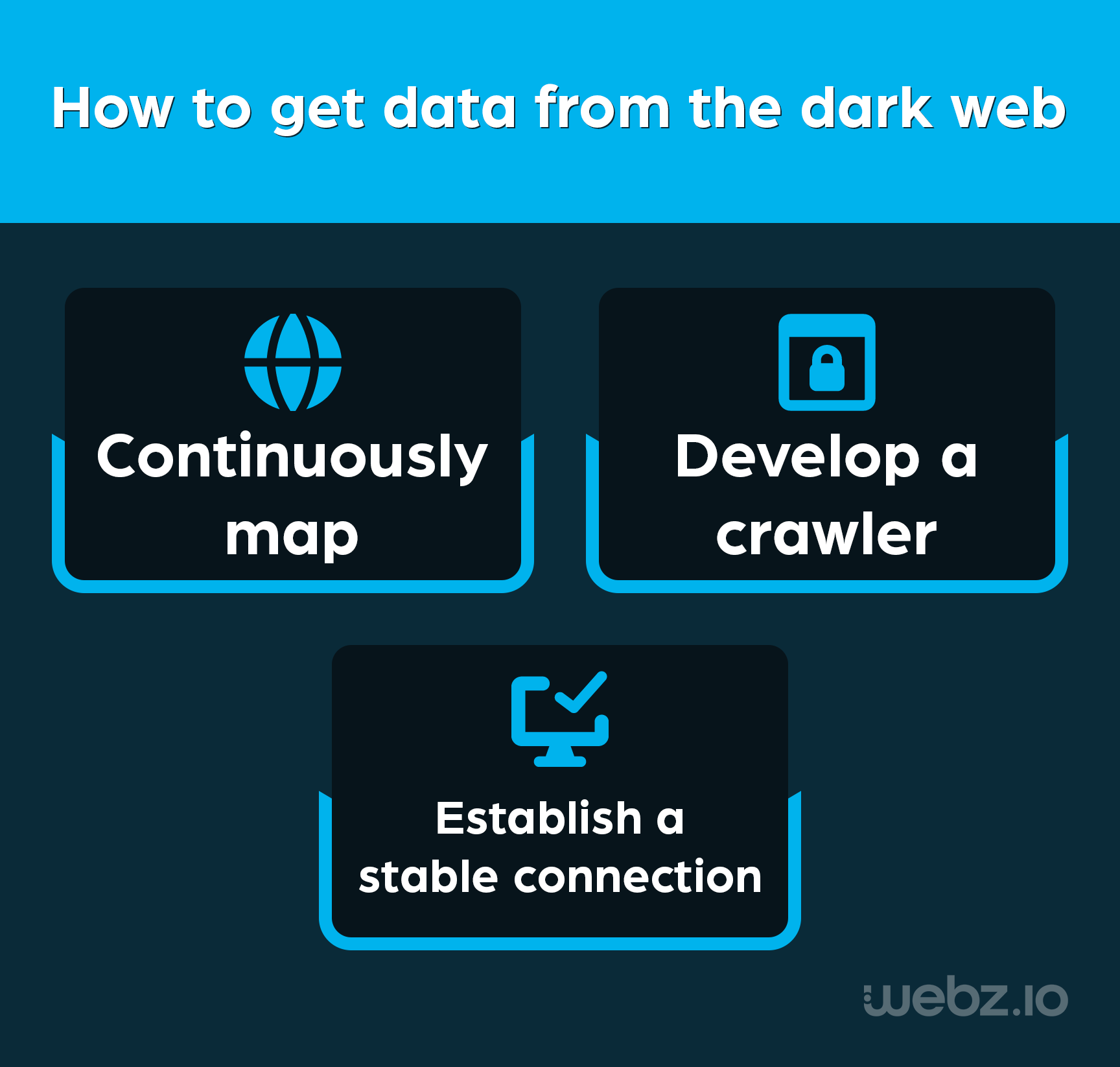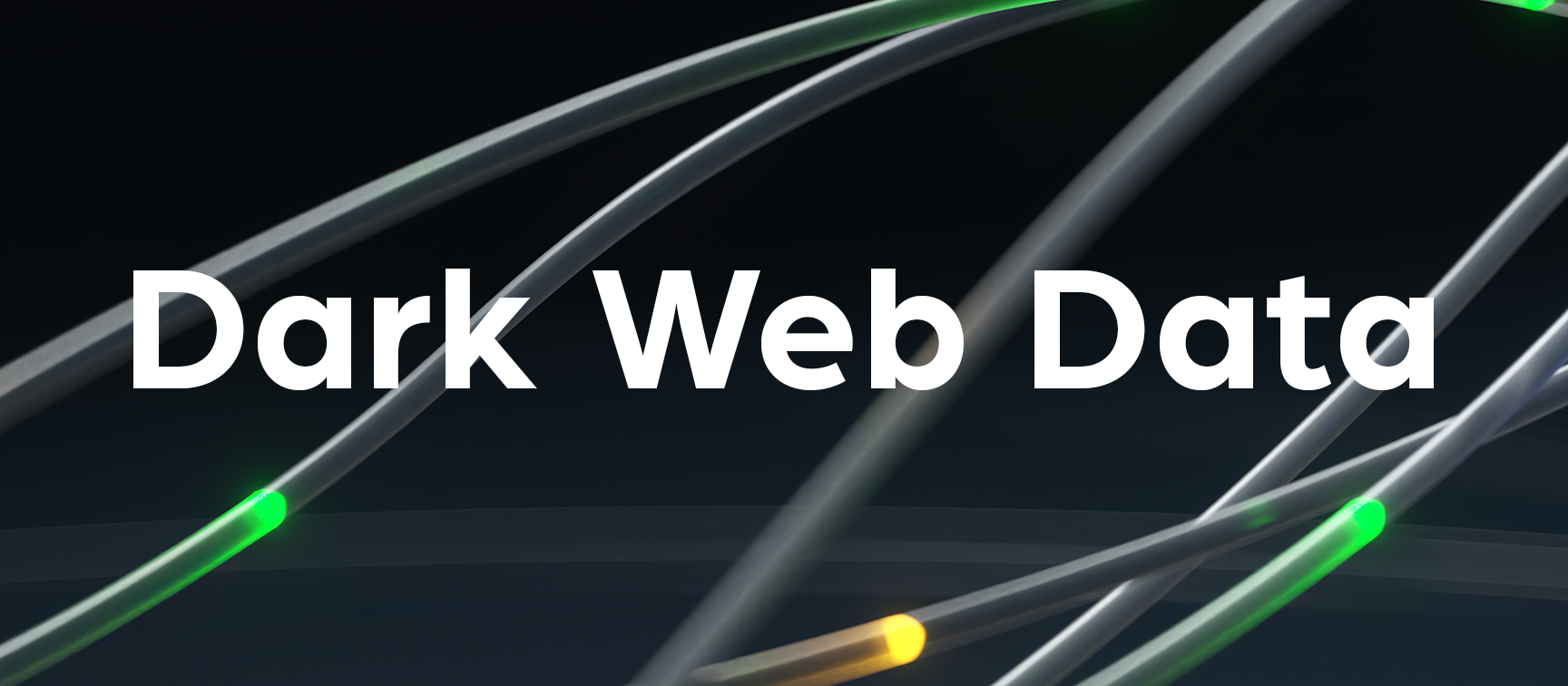The dark web has emerged as a breeding ground for a broad range of illicit activities, posing a significant threat to governments, organizations, and individuals. To stay ahead of evolving threats, it’s imperative for organizations to track the dynamic ecosystem that comprises the dark web.
Organizations have adopted automated dark web monitoring platforms that analyze these hidden corners of the internet to identify threats before they evolve into attacks. Yet these platforms need fuel to realize their analytical power: they need high-quality dark web data.
This guide is a comprehensive resource for everything you need to know about dark web data. It will offer insights into how automated platforms powered by timely, quality dark web data can help companies respond to threats more effectively. By understanding and harnessing the power of dark web intelligence, organizations can bolster their overall cybersecurity and protect their digital assets.
What is the dark web?
Only about 4% of online content is indexed and accessible through conventional search engines like Google and Bing. This content comprises the open web we all use – encompassing indexed web pages accessible to anyone.
The remaining 96% of the content is the deep and dark web. The deep web includes web pages that are deliberately unindexed, often for privacy or monetary reasons. It includes both legitimate sites, like closed Facebook groups, and those hosting illicit activities. Some deep web sites are entirely unindexed, while others have a mix of indexed and unindexed pages, making them partly deep web.
The dark web represents the most concealed layer of the deep web, never indexed by conventional search engines and accessible only through specialized software like Tor, I2P, or Zeronet. The dark web provides a high degree of anonymity, attracting cybercriminals involved in illegal activities like trade in weapons and drugs, alongside hacking and other cybercrime.
The key distinction between the deep and dark webs lies in their accessibility: deep websites are partially accessible through mainstream browsers, while dark websites remain entirely hidden without specific tools.
How to access the dark web?
Accessing the dark web remains a challenge, in part owing to the way this layer of the web works.
One common method of accessing the dark web involves acquiring links to dark web sites from various directories and forums. Yet the dynamic nature of these sites results in frequent URL changes – rendering links quickly outdated. Moreover, searching for these links is highly challenging since the information tends to be dispersed across numerous open and deep web forums.
Dark web search engines, which could potentially simplify access to dark web data, index only a fraction of the content available and thus fall short. Despite improvements in the reach and quality of dark web search engine results, these engines provide broken and outdated links and only offer a glimpse of the scope of information that exists on the dark web.
Lacking a team of in-house dark web specialists, the best way for organizations to access and monitor a broad range of hidden and elusive content on the dark web is with an advanced dark web monitoring API. Webz.io’s Dark Web API automatically discovers new marketplaces, forums, and other sites on the dark web – accessing even content blocked by login or a paywall.
How to get data from the dark web
Obtaining data from the dark web requires a combination of technical skills, tools, and a thorough understanding of the dark web’s unique challenges. It’s also crucial to navigate the dark web cautiously, respecting legal and ethical boundaries when collecting data. To get data from the dark web yourself, you’ll need to:
- Continuously map – The first step is to continuously map relevant sources on the dark web, along with deep web sources like Telegram. This involves identifying and keeping track of websites, forums, marketplaces, or communication channels that may contain data of interest.
- Develop a crawler – Once you know where to look, you need to collect the data itself. Obtaining data from dark web sources requires building a specialized web crawler. Depending on the platform, this can be an API-based crawler for platforms like Telegram or a scraper for TOR websites. These crawlers are designed to navigate the unique structures and protocols of the dark web and deep web.
- Establish a stable connection – Since the dark web is intentionally hidden, accessing it requires the use of proxies and VPNs. Additionally, some sources may implement anti-bot protection mechanisms such as CAPTCHAs or CloudFlare security, which need to be bypassed through automated techniques or manual intervention. In some cases, user logins or access permissions may be required to retrieve data from specific sources.
For organizations that don’t have an internal team of experts specializing in the dark web, the most effective approach to accessing and keeping track of the vast array of hard-to-reach content on the dark web is with a sophisticated dark web monitoring API.

Dark web data sources
While the dark web remains the most significant breeding ground for cyber threats and illicit activities, it’s crucial to recall that threat actors are not confined to this hidden layer of the internet. Integrating a diverse array of data sources with dark web data is essential to building a comprehensive threat intelligence picture.
For example, user-protected sections or resources on indexed sites within the deep web often harbor hidden threats. These areas may include data stores, closed forums, and other repositories of malicious content. Similarly, unregulated social media platforms and alternative social networks have become hubs for cybercriminal activities, extremist content, and disinformation. These platforms are not subject to the stringent regulations of mainstream social media.
Finally, chat applications like Telegram are commonly used by threat actors for covert communication and data sharing. Thus, it’s important to integrate data from these applications into dark web feeds to stay ahead of emerging threats.
Dark web data analysis
Once information is collected, dark web data analysis is the process of interpreting dark web data to identify potential risks, threats, and vulnerabilities. Different tools and solutions can be used for this analysis, each offering its own advantages and challenges:
- Dark web monitoring tools – These tools are user-friendly and accessible, making them suitable for individuals or organizations without extensive cybersecurity expertise. They are particularly useful for monitoring specific keywords, websites, or forums on the dark web.
- Digital risk protection solutions – These solutions provide a broader range of capabilities, extending beyond dark web monitoring to encompass relevant data from the deep web and surface web. They offer a more holistic approach to risk management but come with a higher price tag and require more extensive training.
- Cyber threat intelligence solutions – These solutions tend to be more technical and require more specialized knowledge to operate effectively. They offer in-depth insights into cyber threats, including sophisticated analysis of dark web activities, but are best suited for organizations with dedicated cybersecurity teams.
Conclusion
Packed with hidden, elusive, and often illicit content, the dark web poses a significant cybersecurity threat. Understanding how to access the dark web is a good starting point, but gathering high-quality data is key to mitigating tangible and immediate dark web threats. It’s also crucial to diversify data sources beyond the dark web – integrating and cross-referencing data from the deep web, unregulated social media, and chat applications that have become hubs for malicious activities. Automated dark web monitoring tools, like Webz.io’s Lunar, or dark web data feeds like Dark Web API, can play a pivotal role in identifying emerging threats and enhancing cybersecurity.
Talk to one of Webz.io’s dark web experts today to see how we can help you get dark web data to automate your solution and gain better insights!




